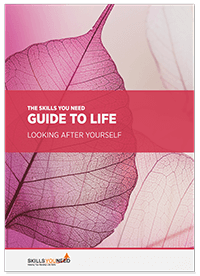Creative Thinking Techniques
See also: Creative LeadershipOur page on Creative Thinking Skills explains that creative thinking is the ability to think about issues and problems in a slightly different way, and therefore generate new solutions. There are a number of ways that we can all become more creative thinkers, such as getting to know more people, and exposing ourselves to new experiences.
However, there are also some tools and techniques that can be used to stimulate creative thinking. They are often used formally, to help with problem solving in the workplace. However, they also have a place outside work, in helping to deal with problems and issues.
This page describes some of the most widely-used tools and techniques for creative thinking, to help you get started.
Although at first glance, some creative thinking techniques may sometimes look a bit ridiculous, there are good principles behind most of them. However sceptical you may be about their potential, it’s a good idea to approach them with an open mind. You may be surprised by the results.
Brainstorming
The best way to have a good idea is to have lots of ideas.
Linus Pauling -
Double Nobel Laureate, chemist, biochemist and peace campaigner.
Brainstorming is the often-maligned practice of getting a group of people together and generating ideas.
The principle behind brainstorming is Linus Pauling’s point that most ideas are not very good. So the best way to have a good idea is to generate lots of ideas, then discard the impractical and inappropriate ones. The trouble is that there is no scientific formula for the number of ideas you need to generate to find a good one, or even a guarantee that you’ll be able to find a good one at all.
It’s generally agreed that the rules of brainstorming, at least in the initial stages, include:
- Everyone having a say
- All ideas being equally valued
- No criticism of other people's ideas is allowed
There are at least a couple of different ways that brainstorming sessions can be run:
- Everyone follows up an initial idea, feeding off it to generate new ones, until an end point is reached on that idea, at which point the group turns to a new idea and does the same.
- Participants are encouraged to come up with more free-flow generation of unconnected ideas that can then be grouped and themed later.
It is also generally agreed that following an initial period of open brainstorming, there needs to be a period of idea evaluation, where questions are asked and criticisms are made. This allows for initial ideas to be explored in more detail and accepted for further investigation or discarded.
Many people also use this opportunity to group ideas by theme to make exploration easier since, often, a lot of the ideas will be linked.
It is important to set aside plenty of time for brainstorming, and to keep exploring even when you think you’ve found a good idea: the first idea is very seldom the best.
Engaging your Right Brain
Much research has been done over the years on the way in which the two sides of the brain work differently.
-
The left side of the brain is supposedly focused on logic and order.
The right side of the brain focuses on the more 'messy', creative and innovative aspects.
Although this is a rather extreme view, there does seem to be evidence that doing physical activities that engage the 'creative' areas of your brain can help you think differently.
One fairly simple way to do this is by drawing or creating something in three dimensions, perhaps using junk-modelling or balloons and post-it notes. This can be an individual or group activity, to aid either your own or everyone’s thinking processes.
Being able to draw is not a prerequisite to this approach. It’s the activity, not the precise form at the end, that’s important.
Examples that use drawing techniques to aid creative thinking
Mind mapping is a technique originally created by Tony Buzan, and adapted by many others since.
Mind mapping uses words connected with arrows or lines. It’s a good way of representing a large amount of interconnecting information in a fairly compact way, and many people also use it for planning presentations or taking notes in meetings.
Mind maps usually start with a single word in the centre, and connected ideas and concepts radiating out via branches.
Rich pictures are a rather more visual version of mind mapping. Again, you create a picture of a situation, but this time using words as sparingly as possible. They’re not banned altogether, but your thinking will be more creative if you focus on the pictures.
Rich pictures encourage the use of colour and symbols: anything, really, that will help your picture to come alive for you, and show you the situation in a different way.
Envisaging the future is an interesting exercise to do with a group especially during times of change.
- Cover as much of a wall as possible with large pieces of paper, such as flip-chart pages.
- Ask the group to start at one edge, and draw the situation, as it currently is. No words are allowed, it all has to be pictures, although they can talk about what they’re drawing.
- Then ask them to move to the opposite edge, and draw the ideal future situation. Again, no words are to be written.
- Next, draw a large semi-circular ‘bridge’ between the current and future sides, and ask the group to draw what needs to happen to move from one side to the other.
This part is clearly the crux, which should help the group see what needs to be done.
The idea behind this is that seeing the pictures makes it easier to 'bridge' the gap between the current situation and the desired future situation.
All these techniques are likely to work best with people who don’t see things very visually. People who already doodle pictures to help themselves think may enjoy this sort of session, but are likely to get less out of it.
Another way of harnessing the creative side of the brain is to make something, perhaps out of balloons, or old cardboard boxes large and small, or even Lego. Many people also find doing jigsaw puzzles is a good way to get some creative thinking time.
The act of making something with your hands, and occupying your conscious mind with spatial problems, can often allow your subconscious to get to work on the big intractable problem.
Just as sleeping on a problem can give you a new perspective, so can doing something completely different.
Role-Play Situations
Role-play situations are probably the 'Marmite' of management development courses: you either love them or you hate them. But love them or hate them, they can have some dramatic results.
‘Role-play’, does not just include the basic ‘pretend I’m your customer’-type role-plays, or even ‘walk around the room trying to channel an animal’-type exercises, which rightly or wrongly are often regarded as something of a waste of time.
Role-play situations also cover other, more radical and powerful ideas such as Richard Olivier’s Mythodrama, which explores leadership through the medium of Shakespeare’s plays. Olivier found using Henry V as a management textbook opens up some interesting ideas, and there is more about his ideas on our page on Leadership Styles.
The term ‘role-play’ also encompasses Business Constellations.
Business Constellations is a technique emerging from family therapy, which allows a group to explore the interrelationships within it by the use of actors or group members to represent particular individuals, not necessarily themselves.
- One person starts by placing all the others in the room to show the way that they see the problem.
- In turn, each person in the group then moves to where they see themselves fitting best. And of course, as each person moves, it affects the others in the group, who then want to move again.
- The end point is reached when everyone is comfortable with their location within the group, and this represents the ‘shape’ of the group and the dynamics within it.
This is a very powerful technique, which can cause emotions to run high, so should only be undertaken with a trained practitioner to facilitate.
Even those qualified to lead this kind of role-play exercise, and who have done so many times, can often be surprised by their outcomes. There is something about pretending to be someone else and channelling someone else’s emotions which is astonishingly freeing and can lead to hugely creative thinking.
Further Reading from Skills You Need
The Skills You Need Guide to Life: Looking After Yourself
Based on some of our most popular content, this eBook will help you to live a happier, healthier and more productive life.
Learn how to look after your body and mind: the fundamental first steps to personal development.
This eBook, now in its second edition, with new and revised content, is designed to make life both easier and better.
A Take-Home Message
There are two key things to remember when you are engaged in creative thinking skills and techniques.
The first is don’t stop there. Even when you think you’ve reached a good point, carry on a bit further. Don’t be satisfied with the first solution you reach. Instead, as long as you have time, try exploring other ideas, or even push the one that you have a bit further. Take it right to the point of idiocy, and see where that gets you.
As Oscar Levant said, there is a fine line between genius and insanity. Try crossing it, giving yourself the option of crossing back to the point of genius again.
The second point is closely related and it is ‘go with the flow’.
Sometimes the most useful outcomes of any creative thinking exercise are the unexpected ones, so don’t squash ideas just because they don’t seem to fit straight away. Just let them run for a while and see what happens.
An open mind is the most important prerequisite for creative thinking.


